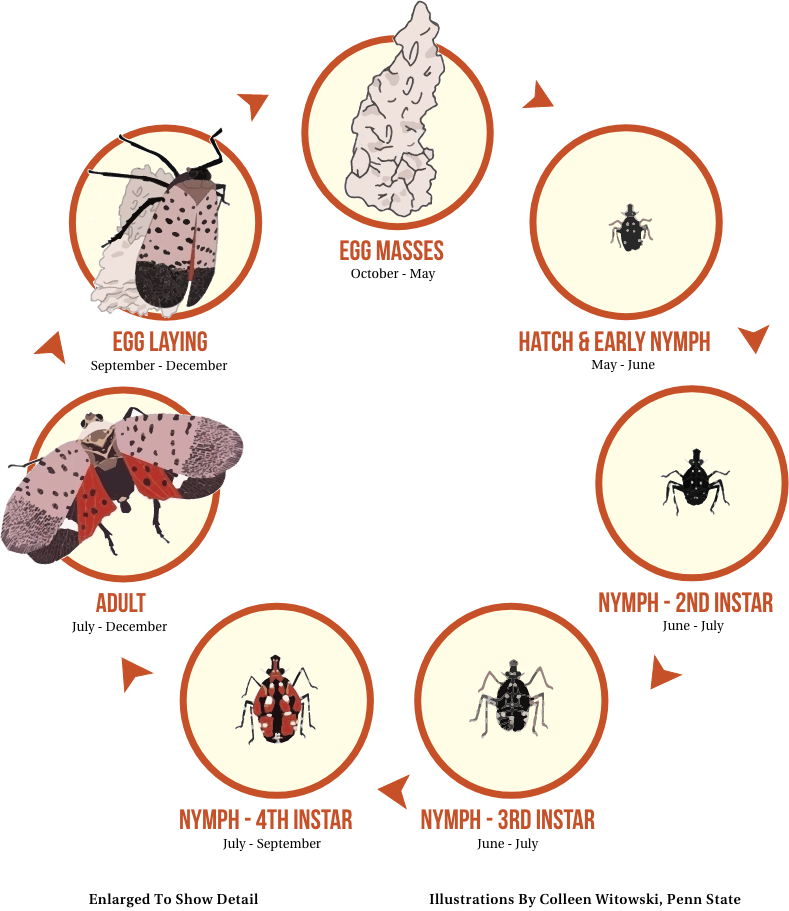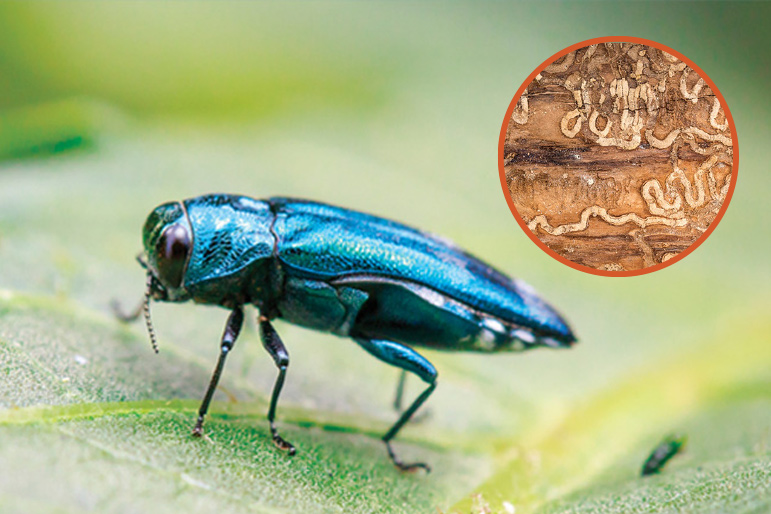

Emerald Ash Borer
We have been dealing with Emerald Ash Borer (EAB) in the Delaware Valley for almost 10 years. At this point, untreated ash trees are either dying or infested with EAB. We have had success with trunk injections of emamectin benzoate in two-year intervals during this heavy part of the EAB onslaught.
We continue to recommend this protocol for now, but we hope that as the pest population dwindles we can use a smaller amount of the insecticide or increase the interval between treatments. We must be careful because this is such a deadly pest, but we do expect some reduction in EAB numbers over the next 10 years.
Spotted Lanternfly
2020 was our first full season dealing with a new visitor to the Delaware Valley, the Spotted Lanternfly (SLF). SLF is new to this continent, and we learned something new about this creature every time we encountered it, as information on University Extension websites in 2019 proved to be fairly unreliable in predicting SLF’s behavior and host preferences.
When SLF hatch out around Memorial Day, the young nymphs tend to scatter all around a property, feeding on a variety of smaller ornamental plants, including hydrangea, roses, and even cucumbers. They do very little damage to plants at this stage in life; but as they mature, they move on to trees — including willows, styrax, maples, and birch — and this is when the real damage occurs. If you are lucky enough to have SLF's most preferred host trees — Ailanthus (tree of heaven) and Amur cork — you probably saw that they will feed the entire season on those trees, making quite a mess of honeydew and sooty mold.
While we learned a great deal about SLF last year, our treatment philosophy has not changed much. We are most interested in preserving tree health. Keeping SLF populations suppressed to a point where they are not injuring a tree is not difficult; a systemic treatment applied to the bark is usually sufficient
to keep SLF from hurting ornamental trees. What is difficult is excluding SLF from your property or eradicating it completely. Aerial sprays are not the answer, as they will kill beneficial insects. We need to realize that SLF is something that we are going to have to live with for now, but with proper treatment it should not be a threat to our ornamental plants.
Some potential good news: We saw a big reduction in SLF egg-laying last fall, so the numbers may be lower in 2021.

When heavy winds blow, major limbs — and sometimes entire trees — fall. The primary reason for this is poor structure, which results...

In the past 10 years, several significant pest and disease issues have become so common that we deal with them every day. Here...

Beech Leaf Disease (BLD) is emerging as the biggest threat to our trees since Emerald Ash Borer.
As we have communicated over the past...